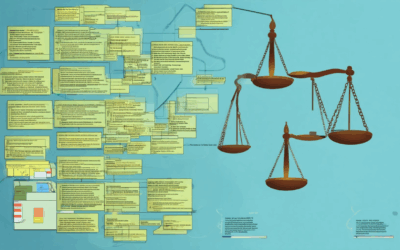Emergency planning for nonprofits is a critical aspect of ensuring the continuity of operations and the safety of staff, volunteers, and the communities they serve. With increasing frequencies of natural disasters, civil unrest, and other emergencies, nonprofits must adopt robust emergency preparedness strategies to mitigate risks and respond effectively when crises arise. This comprehensive guide will walk you through the essential steps, tools, and best practices needed to develop a thorough emergency plan tailored to the unique challenges faced by nonprofit organizations. From understanding the need for emergency planning to securing necessary resources and building solidarity networks, this article provides actionable insights to help your nonprofit stay prepared and resilient in the face of unexpected events. By integrating effective communication strategies, conducting regular drills, and continuously improving your plan based on real-world experiences, your nonprofit can minimize disruptions and support recovery efforts when emergencies strike.
Key Takeaways
- A comprehensive emergency plan is essential for nonprofits to prepare for various crises and ensure the safety of staff, volunteers, beneficiaries, and assets.
- Conduct thorough risk assessments to identify potential hazards and develop mitigation strategies to minimize disruptions.
- Establish strong communication channels and defined roles to ensure efficient coordination during emergencies.
- Designate safe zones and create evacuation routes to protect everyone during critical situations.
- Develop specific protocols for medical emergencies, fires, and security breaches to respond effectively.
- Create recovery plans to restore operations quickly and secure backup systems for continuity.
- Conduct regular drills and train staff to handle emergencies confidently and communicate procedures clearly.
- Regularly update the emergency plan based on feedback and new threats to maintain effectiveness.
- Test your plan with drills and gather feedback to improve readiness and response efficiency.
- Adopt the ‘3 Cs’—Check, Call, Care—to respond effectively during emergencies and minimize risks.
- A solid emergency plan builds public trust and ensures the organization’s mission and reputation remain intact during crises.

What Are the 5 Steps in the Emergency Planning Process?
The emergency planning process is a systematic approach to prepare for potential crises and ensure effective responses. Below are the five key steps involved:
- Conduct a Needs Assessment
- Identify potential risks and threats that could affect the organization.
- Assess the likelihood and impact of these risks on operations, assets, and people.
- Determine the specific needs and resources required to address these threats.
-
Develop an Emergency Plan
- Create a comprehensive plan tailored to the organization’s unique situation.
- Outline roles, responsibilities, and procedures for different emergency scenarios.
- Establish communication protocols and decision-making processes.
-
Implement Preparations
- Develop emergency kits and stockpile necessary supplies.
- Train employees and stakeholders on emergency procedures.
- Identify safe locations and evacuation routes within the premises.
-
Create an Emergency Operations Plan (EOP)
- Define the chain of command and reporting structures.
- Include detailed procedures for various emergency situations.
- Regularly update and test the EOP to ensure readiness.
-
Regularly Drill and Train
- Conduct regular emergency drills to familiarize teams with the plan.
- Provide feedback and make adjustments based on drill outcomes.
- Stay informed about emerging threats and update the plan accordingly.
By following these steps, organizations can minimize risks, reduce downtime, and ensure a swift and organized response during emergencies.
What Are the 7 Steps in the Emergency Action Plan?
Here are the 7 critical steps involved in developing and implementing an effective emergency action plan:
- Identify Potential Hazards : Conduct a thorough assessment of possible risks, whether they relate to natural disasters, equipment malfunctions, or human error. This ensures the plan is prepared for a variety of scenarios.
- Develop Policies and Procedures : Create clear guidelines and protocols to address emergencies. Include specific actions for different types of incidents, such as fire, medical situations, or system failures.
- Create Communication Plans : Establish a reliable communication network to ensure that everyone knows their roles during an emergency. Designate key contacts and set up systems for sharing updates and instructions.
- Train Employees and Stakeholders : Regularly conduct drills and training sessions to prepare individuals for real-life emergencies. Ensure that all team members understand their responsibilities and feel confident in the plan’s effectiveness.
- Establish Evacuation Routes and Procedures : Map out safe exit paths and specify evacuation procedures. Ensure that these routes remain unobstructed and are easily accessible during an emergency.
- Implement Contingency Plans : Prepare alternative strategies to address unexpected challenges. This includes having backup supplies, alternative communication methods, and secondary escape routes.
- Regularly Review and Update the Plan : Schedule periodic reviews to evaluate the effectiveness of the emergency action plan. Make adjustments based on feedback, lessons learned, and changes in the environment or operations.
By following these steps, organizations can minimize risks and maximize their ability to respond effectively during emergencies. For more detailed guidance, refer to our comprehensive Emergency Preparedness Guide .

The Four R’s of Emergency Plan
The four key components of an effective emergency plan are organized into the acronym “R” to ensure comprehensive preparation and management during crises. These components are:
- Readiness : This involves preparing for potential emergencies by developing plans, conducting drills, and assembling necessary supplies. It ensures that individuals and organizations can respond quickly and effectively when an emergency arises.
- Response : During an emergency, the immediate actions taken to address the situation are crucial. This includes activating emergency procedures, notifying authorities, and implementing containment strategies to minimize damage or danger.
- Recovery : Following an emergency, recovery efforts focus on restoring normal operations and addressing the aftermath. This involves repairing damages, assessing injuries, and ensuring the safety and well-being of those affected.
- Reduction : Prevention measures are taken to reduce the likelihood of emergencies occurring. This includes hazard identification, risk assessment, and enforcement of safety protocols to minimize potential threats.
By integrating these four elements, emergency plans become more robust and capable of handling various scenarios effectively.

What Should an Emergency Plan Include?
An effective emergency plan is essential for nonprofits to ensure the safety of staff, volunteers, beneficiaries, and assets during critical situations. Below is a detailed breakdown of what should be included:
1. Introduction
- Explain the purpose of the emergency plan.
- Define the scope of emergencies it aims to address.
- State the entities covered (e.g., staff, volunteers, board members).
2. Scope
- Identify individuals involved: staff, volunteers, contractors, visitors.
- Specify types of emergencies: natural disasters, health crises, cyberattacks, accidents.
- Include locations: physical offices, remote teams, event venues.
3. Objectives
- Minimize risks and disruptions to operations.
- Protect people, property, and programs.
- Ensure quick and effective response.
- Foster stakeholder confidence and public trust.
4. Components
- Risk Assessment & Management : Identify potential hazards, assess vulnerabilities, and develop mitigation strategies.
- Communication & Coordination : Establish chains of command, create contact lists, and define roles.
- Evacuation & Shelter : Designate safe zones, create evacuation routes, and partner with nearby shelters.
- Incident Response : Develop protocols for medical emergencies, fire drills, and security breaches.
- Recovery & Continuity : Create recovery plans, secure backup systems, and resume operations quickly.
- Training & Awareness : Conduct regular drills, train staff, and communicate emergency procedures.
- Continuous Improvement : Regularly update the plan based on lessons learned and new threats.
5. Implementation Strategy
- Assign responsibility for developing and reviewing the plan.
- Schedule regular updates and training sessions.
- Ensure compliance with local laws and regulations.
6. Testing & Evaluation
- Conduct drills to evaluate readiness.
- Gather feedback from participants and adjust the plan as needed.
- Review and revise the plan annually or after significant changes.
7. Conclusion
- Reiterate the importance of having a robust emergency plan.
- Emphasize its role in safeguarding the organization’s mission and reputation.
By incorporating these elements, an emergency plan can significantly enhance preparedness, minimize disruptions, and protect the organization’s operations during crises.
What Are the 5 Components of an Emergency Plan?
An effective emergency plan is essential for preparing communities, organizations, and individuals to respond swiftly during crises. Below are the five key components of a comprehensive emergency plan:
1. Prevention
Prevention focuses on reducing risks and hazards before they occur. This involves implementing measures to identify potential threats, assess vulnerabilities, and take proactive steps to mitigate them. Key elements include: – Risk assessment and hazard identification – Safety protocols and training programs – Regular maintenance and equipment checks – Community awareness campaigns
2. Protection
Protection ensures that people, assets, and infrastructure are safeguarded during an emergency. This includes: – Developing evacuation plans and safe locations – Establishing secure zones and shelters – Implementing access control measures – Utilizing protective equipment and barriers
3. Mitigation
Mitigation involves actions taken to reduce the impact of emergencies when they occur. Strategies include: – Building resilient structures and infrastructure – Installing safety systems and alarms – Creating contingency plans – Conducting disaster drills and simulations
4. Response
Response is the immediate action taken during an emergency to manage the situation and minimize losses. Critical aspects include: – Activation of emergency communication systems – Deployment of trained personnel and resources – Coordination with local authorities and agencies – Efficient management of medical and logistical support
5. Recovery
Recovery ensures that affected areas return to normal operations as quickly as possible. This phase involves: – Damage assessment and repair – Rebuilding infrastructure and facilities – Providing mental health support and counseling services – Implementing long-term reconstruction plans
Why an Emergency Plan is Essential
A well-structured emergency plan enhances preparedness, reduces panic, and improves outcomes. It fosters collaboration among stakeholders, including governments, organizations, and citizens, ensuring a unified response.
By incorporating these components, organizations and communities can create robust emergency plans tailored to their unique needs. To learn more about developing and implementing effective emergency plans, visit our Emergency Preparedness Resource Hub .

What Are the 3 C’s of an Emergency Action Plan?
The 3 C’s of an effective emergency action plan are fundamental steps designed to ensure safety and preparedness. These steps are often remembered by the acronym “Check, Call, Care.”
- Check :
- First, assess the situation to determine if it’s safe.
- Ensure everyone in the area is accounted for and uninjured.
- Identify and address immediate hazards or injuries.
- Call :
- Contact emergency services immediately if there’s a serious injury or immediate danger.
- Inform others who may need to assist or evacuate the area.
- Care :
- Provide first aid to anyone injured until professional help arrives.
- Help move individuals to a safe location if possible.
- Stay with the injured person until help arrives unless it’s unsafe to do so.
By following these steps, you can respond effectively during emergencies and minimize potential risks.





0 Comments